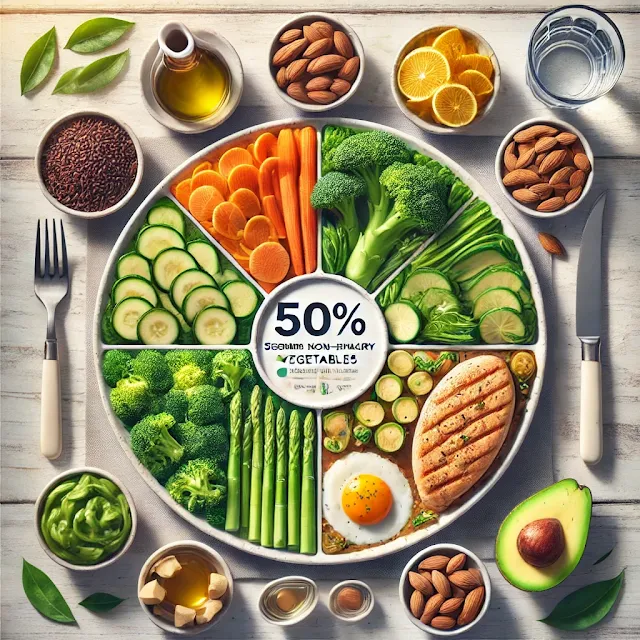Dinner for Diabetics: A Comprehensive Guide to Healthy and Balanced Meal Planning
Dinner is a crucial meal for individuals with diabetes, as it directly affects blood sugar levels overnight. A well-balanced evening meal can help stabilize glucose levels, reduce complications, and promote overall well-being. In this article, we will explore why dinner is important for diabetics, provide key tips for meal planning, and share examples of nutritious dinner options to keep blood sugar levels in check.
Why Dinner Matters for Diabetics
The body's metabolic activity slows down during sleep, and blood sugar levels can fluctuate based on the type and quantity of food consumed at dinner. An unhealthy or unbalanced dinner may lead to:
- Blood sugar spikes or drops during the night.
- Nocturnal hypoglycemia, which can disturb sleep and impact health.
- Increased weight gain and poor glucose control.
On the other hand, a properly planned dinner can:
- Maintain stable glucose levels overnight.
- Support healthy metabolism and overall energy balance.
- Reduce the risk of diabetes-related complications.
Skipping dinner or consuming excessive carbohydrates and unhealthy fats can disrupt glucose control, leading to fatigue or sluggishness the following day.
Key Principles of a Diabetes-Friendly Dinner
To create a healthy dinner, it is essential to focus on the right balance of nutrients. Here are the key components to consider:
1. Prioritize Complex Carbohydrates
Carbohydrates have the most significant impact on blood sugar levels, so choosing the right type is crucial. Opt for complex carbohydrates with a low glycemic index (GI), as they digest slowly and prevent sudden glucose spikes. Examples include:
- Brown rice
- Quinoa
- Sweet potatoes
- Whole-grain bread or pasta
Avoid refined carbs like white bread, white rice, or sugary foods, as they cause rapid sugar surges.
2. Incorporate Lean Protein
Protein helps regulate blood sugar levels and promotes satiety. Lean protein sources include:
- Grilled chicken or turkey
- Fish rich in omega-3 fatty acids (e.g., salmon, mackerel)
- Eggs
- Plant-based proteins like tofu, lentils, or chickpeas
3. Include Healthy Fats
Healthy fats improve insulin sensitivity and support heart health. Sources of healthy fats include:
- Avocados
- Olive oil
- Nuts and seeds (e.g., almonds, chia seeds)
- Fatty fish
However, portion control is key to avoid excessive calorie intake.
4. Add Fiber-Rich Vegetables
Fiber slows sugar absorption, improves digestion, and keeps you full longer. Include plenty of non-starchy vegetables, such as:
- Leafy greens (spinach, kale, arugula)
- Broccoli, cauliflower, zucchini
- Bell peppers, carrots, and cucumbers
Aim to fill half your plate with vegetables for a nutrient-packed meal.
5. Limit Sugary and Processed Foods
Processed foods often contain hidden sugars, unhealthy fats, and high sodium, all of which can negatively affect blood sugar control. Avoid items like:
- Sugary beverages or desserts
- Fried foods
- Pre-packaged snacks and ready-made meals
Portion Control for a Balanced Plate
For diabetics, managing portion sizes is just as important as selecting the right foods. A balanced dinner plate should include:
- 50% vegetables: Focus on non-starchy vegetables for fiber and nutrients.
- 25% protein: Choose lean sources like grilled chicken or plant-based proteins.
- 25% carbohydrates: Opt for low-GI carbs like quinoa or sweet potatoes.
- A small portion of healthy fats: Add a teaspoon of olive oil or a small handful of nuts.
Using smaller plates and eating slowly can also help avoid overeating.
Examples of Diabetes-Friendly Dinner Ideas
Here are some practical and delicious dinner ideas to inspire your meal planning:
1. Grilled Salmon with Steamed Vegetables and Quinoa
- A fillet of grilled salmon provides omega-3 fatty acids for heart health.
- Pair it with steamed broccoli, carrots, and zucchini for fiber.
- Add a small portion of quinoa for complex carbs.
2. Chicken Stir-Fry with Brown Rice
- Sauté lean chicken breast with colorful vegetables like bell peppers, snap peas, and mushrooms.
- Use olive oil and a splash of low-sodium soy sauce for flavor.
- Serve with a side of brown rice for slow-releasing energy.
3. Lentil Soup with Whole-Grain Bread
- A hearty bowl of lentil soup offers plant-based protein and fiber.
- Pair it with a slice of whole-grain bread for a satisfying, balanced meal.
4. Vegetable and Tofu Curry with Millet
- Cook tofu with non-starchy vegetables like spinach, cauliflower, and eggplant in a light coconut milk base.
- Use spices like turmeric and cumin for added health benefits.
- Serve with a small portion of millet or brown rice.
5. Greek Salad with Grilled Chicken
- Combine leafy greens, tomatoes, cucumbers, olives, and feta cheese for a refreshing salad.
- Top with grilled chicken slices for lean protein.
- Use olive oil and lemon juice as a simple, diabetes-friendly dressing.
Tips for Preparing Diabetes-Friendly Dinners
- Plan ahead: Prepare a weekly meal plan to avoid last-minute unhealthy choices.
- Cook at home: Home-cooked meals allow better control of ingredients, portions, and cooking methods.
- Use spices and herbs: Instead of salt, flavor your meals with spices like garlic, turmeric, cinnamon, or basil.
- Hydrate well: Drink plenty of water throughout the evening to support digestion and glucose regulation.
- Eat on time: Finish dinner at least 2–3 hours before bedtime to allow proper digestion and avoid overnight sugar fluctuations.
Conclusion
For individuals with diabetes, dinner isn’t just a meal—it’s an opportunity to stabilize blood sugar levels, improve overall health, and maintain energy for the next day. By focusing on low-GI carbohydrates, lean proteins, healthy fats, and fiber-rich vegetables, you can enjoy flavorful, satisfying meals without compromising your health.
Incorporating portion control, mindful eating habits, and regular blood sugar monitoring further enhances the effectiveness of a diabetes-friendly dinner plan. Start taking small steps today to make healthier choices and take charge of your diabetes management!



